Fast, Easy, And Permanent Keratosis Pilaris (Chicken Skin) Treatment That Actually Works!
One has to feel confident in their own skin and confidence comes with self-love. If you are facing Keratosis Pilaris or chicken skin and it’s making you self-conscious, then keep reading, you might find this helpful.
On Feb 1, 2023 – 6 minutes read
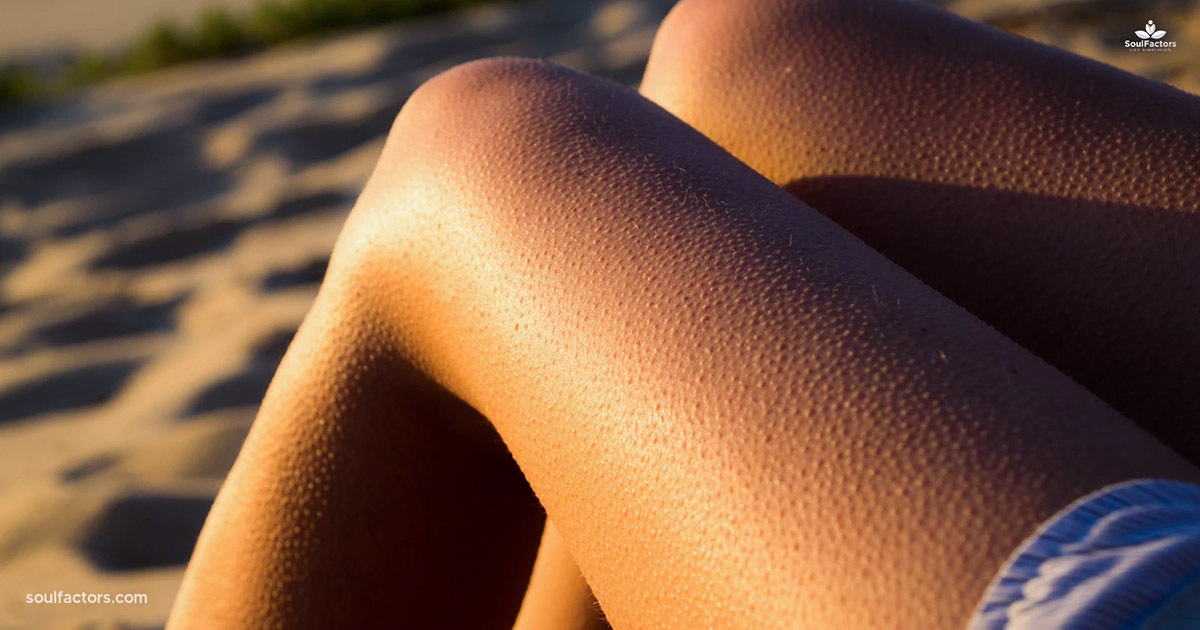
One’s skincare should just be focused on just the face, skin issues can come anywhere on the body. Most people don’t talk about it, cover it up, or just hide it with makeup. As long as one has hair follicles Keratosis Pilaris can appear anywhere on the body. To treat Keratosis Pilaris otherwise known as chicken skin one must understand what the condition looks like, why, and how it occurs.
Keratosis Pilaris (Chicken Skin) Treatment: What Is Keratosis Pilaris?
Keratosis Pilaris is a condition that occurs when the hair follicles get plugged with dead skin cells. The skin with Keratosis Pilaris looks rough and bumpy with bumps occurring in clusters, similar to the skin of a chicken hence the name chicken skin. In lighter complexions, Keratosis Pilaris occurs as tiny red bumps and in darker skin tones the bumps may be dark brown in color.
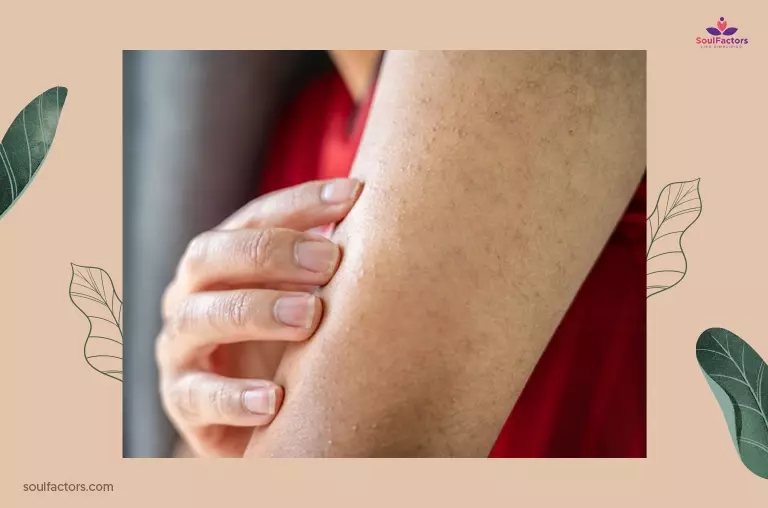
Some of the common areas where the condition occurs are the upper arms, thighs, buttocks, and cheeks. The condition is not contagious nor does it pose any issues to one’s health, but it can aggravate during winter or when a person goes through hormonal changes, for example, during pregnancy, women who have Keratosis Pilaris have seen the condition worsen during this period.
Though the condition is harmless one might find it uncomfortable and unpleasant to the eyes. In some, the condition will naturally start to disappear when one enters their 30s. But if your chicken skin is too stubborn, there are keratosis pilaris (chicken skin) treatment methods that will certainly get rid of them.
Chicken Skin Vs Strawberry Skin
what are the differences between chicken skin (KP) and strawberry skin? Most people confuse Keratosis Pilaris with strawberry skin and vice versa. Keratosis pilaris and strawberry are two different conditions. The strawberry skin treatment and chicken skin treatments are also different.
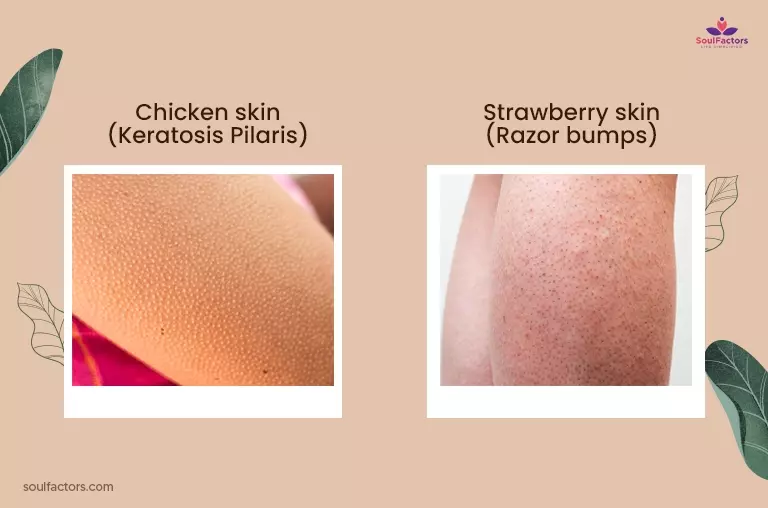
| Chicken skin (Keratosis Pilaris) | Strawberry skin (Razor bumps) |
| Keratosis Pilaris is caused when there is excess keratin buildup in the hair follicles. | Strawberry skin is caused when the hair follicles are enlarged and trap dead skin, oil, and bacteria |
| Genetic skin condition | Temporary skin condition |
| Occurs naturally but can get worse during winters and with changing hormonal cycles | Caused by hair removal methods such as shaving and waxing |
| Doctors might require a physical examination and also medical history of the patient to understand the cause of Keratosis Pilaris | The issue can be resolved by using good hair removal tools and skin care targetted for strawberry skin |
| Does not pose any health risk | Does not pose any health risk |
Causes Of Keratosis Pilaris
Those who suffer from Keratosis Pilaris suffer from clogged hair follicles as a result of keratin buildup. Therefore instead of the hair growing out a small bump is formed. The actual cause of keratin buildup is under study but experts believe that the cause could be genetic.
Symptoms Of Keratosis Pilaris
One of the ways a dermatologist identifies keratosis pilaris is by its appearance. It usually appears in a cluster of tiny bumps that look like goose bumps or chicken skin it can either be red or dark brown bumps depending on your skin color. Keratosis Pilaris can appear anywhere on the body where there are hair follicles, therefore it cannot occur on the palms or feet. It’s prominently seen on the upper arms, thighs, and buttocks. The condition can extend over time to the lower legs and hands. The area might be dry and itchy for some people.
What Is The Best Treatment For Keratosis Pilaris?
Keratosis can be managed by clinical treatments and also with over-the-counter treatments.
Keratosis Pilaris (Chicken Skin) Treatment- Clinical Treatments
- Chemical Peels- Your dermatologist will use a chemical peeling solution to remove the dead skin and unclog the pores to reveal more youthful and smooth skin. The type and strength of the peel will depend on the objective of the treatment and also on the severity of your Keratosis Pilaris. A chemical peel is usually performed in a skin clinic as an outpatient procedure, the area after a chemical peel will need special care which your dermat will brief you on, before starting the procedure. The usual chemicals used in this procedure are lactic acid, glycolic acid, salicylic acid, carbolic acid, or trichloroacetic acid. The strength of the peel and the number of procedures you will need is determined by your doctor.
- Microdermabrasion- Microdermabrasion(1) is a skin treatment done by a dermatologist to remove the gunk, and dead skin cells to renew the skin and improve its texture. The procedure uses a machine with a vacuum tip to pull out the dead skin. This is one of the most recommended treatments for KP and there are zero side effects and no specific aftercare is necessary. The procedure can be done on almost all skin types without risk.
- Laser Treatments- According to your skin type and condition your doctor might recommend light therapy or laser for your Keratosis Pilaris. The type of laser will be determined by the doctor, generally, you might need to use two types of laser one to get rid of the redness and dead cells and another laser to improve the pigmentation and texture.
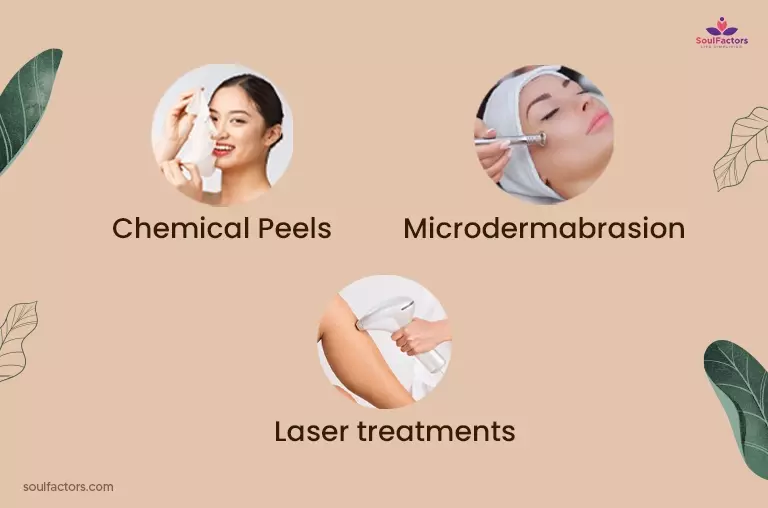
Keratosis Pilaris (Chicken Skin) Treatment: Tropical Treatments
Before getting yourself any cream it’s important to consult with your dermatologist. This is because most of the tropical creams that are used for the treatment of Keratosis Pilaris can be strong and can cause side effects when not used under prescription. Some common side effects may include dryness, redness, sensitivity, and irritation.
Over-the-counter creams used in Keratosis Pilaris commonly include lactic acid, salicylic acid, glycolic acid, AHA’s (2), or retinol.
Prevention And Care
Managing Keratosis Pilaris can be tricky as it’s a genetic skin condition. Even if you treat the condition there are chances that it might reappear. Therefore consistency in using skincare that targets Keratosis Pilaris is very important. Shaving, waxing, or other hair removal methods can aggravate your condition.
Here are some of our skincare/ Keratosis Pilaris (Chicken Skin) treatment recommendations that you can include in your everyday skincare routine:
- SLMD Glycolic Acid Body Scrub
- Neutrogena Body Clear Pink Grapefruit Body Wash
- EltaMD Intense Face and Body Moisturizer
- Eucerin Roughness Relief Lotion
- Oui the People Cheat Sheet Resurfacing Body Serum
- First Aid Beauty KP Bump Eraser Body Scrub
- CeraVe SA Lotion for Rough & Bumpy Skin
- Amlactin Daily Moisturizing Body Lotion
- Nécessaire The Body Exfoliator
- Some By Mi AHA-BHA-PHA Real Cica 92% Cool Calming Soothing Gel
- The Ordinary Glycolic Acid 7% Toning Solution
Some Lifestyle Changes That Aid Keratosis Pilaris (Chicken Skin) Treatment
Keratosis Pilaris cannot be cured with just home remedies but at the same time following these simple tips along with your treatment can help manage the issue faster.
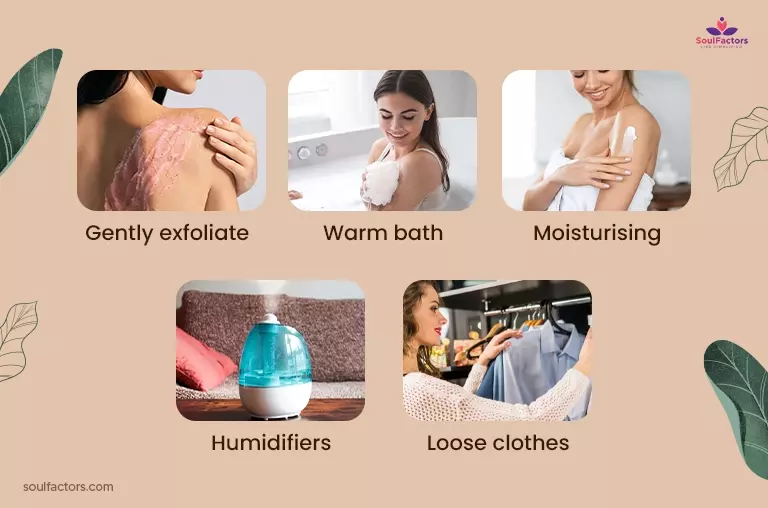
- Gentle Exfoliation- Using a gentle exfoliator every day can help improve the texture of Keratosis Pilaris or chicken skin as it gets rid of dead skin cells
- Warm Bath- Taking warm but shorter baths can help soften the skin, and unclog pores. Do not spend a long time in the bath as this can strip the skin of its natural oils further causing irritation and worsening the condition.
- Moisturising- Moisturising the skin right after the bath when the skin is still damp will help the skin absorb the moisturizer better. Moisturizing can help increase cell turnover and hence speed up the recovery process.
- Humidifiers- Adding humidifies will ensure that the room is well moisturized and reduce itchiness in the affected areas.
- Loose Clothes- Wear loose cotton clothes when you are at home or while stepping out and avoid tight clothes as much as possible, friction can irritate the skin with Keratosis Pilaris easily.
Final Thoughts
Though in most cases Keratosis Pilaris go away as one enters their 30s, due to its chicken skin-like appearance it might be embarrassing for many. Chicken skin or Keratosis Pilaris is common and nothing to be worried or embarrassed about. Follow the above keratosis pilaris (chicken skin) treatment methods and make the necessary lifestyle changes. With consistency and patience, you can manage Keratosis Pilaris easily.

Subscribe to Newsletter
Elevate your routine, stay on trend, and embrace a personalized beauty journey with our curated insights.


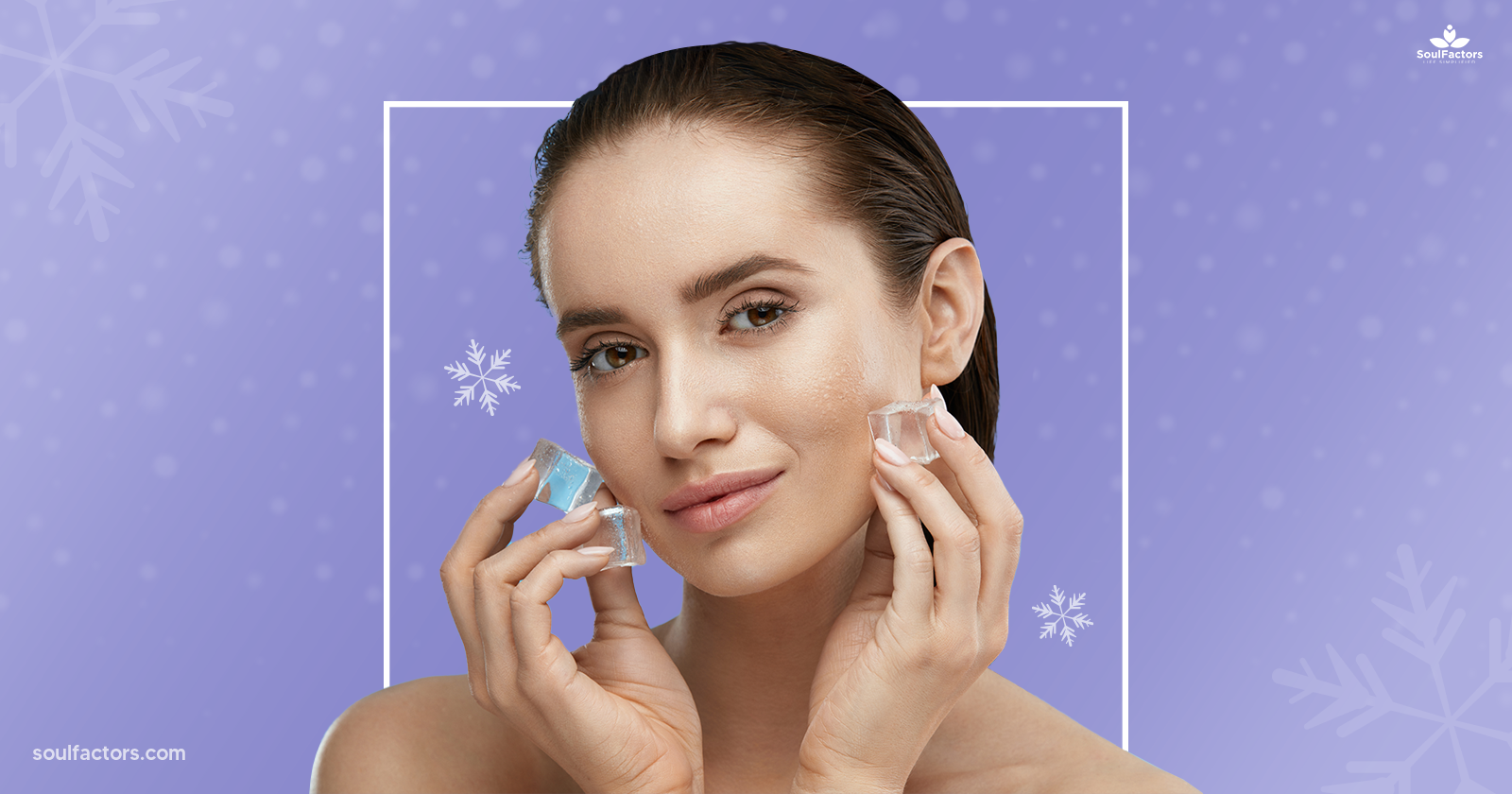
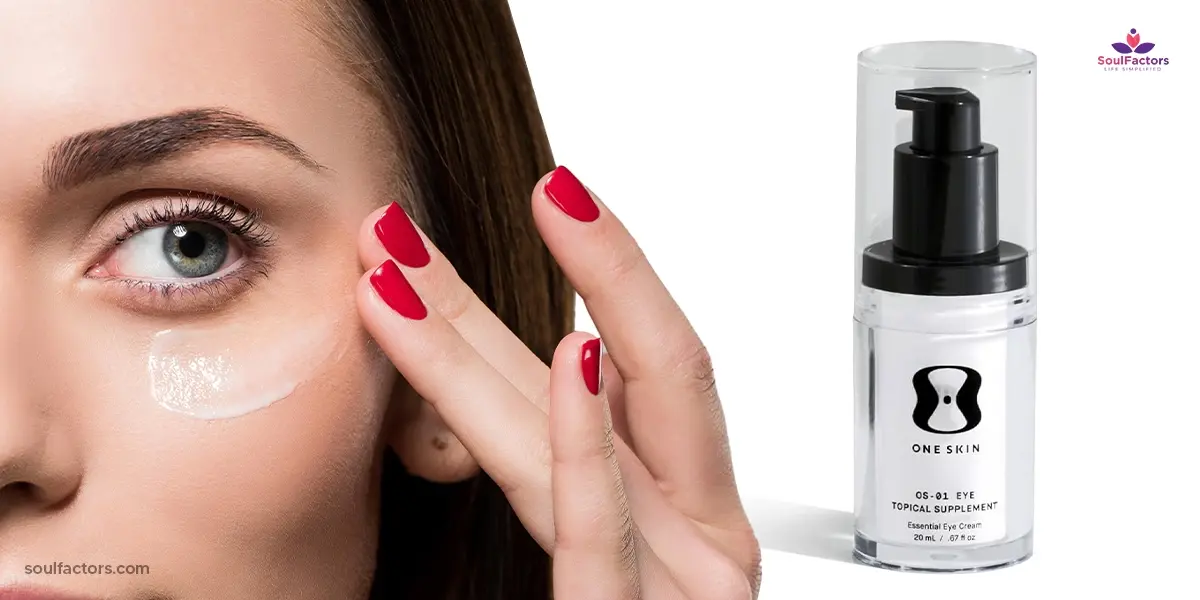
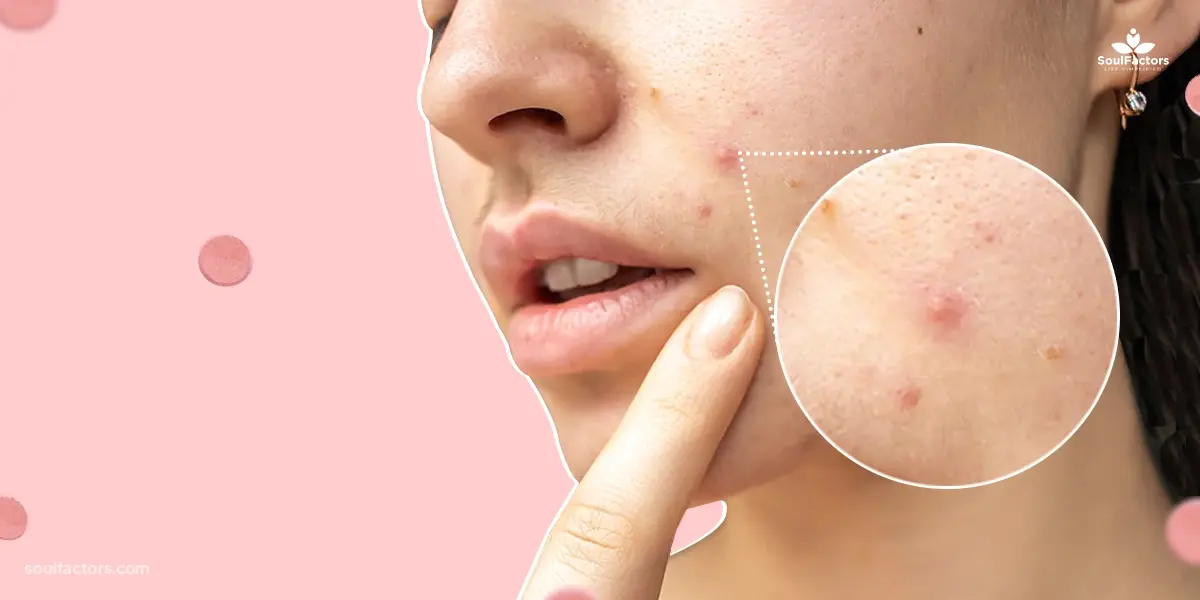
Write a Comment